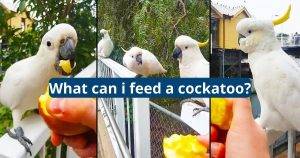Types of Lovebirds Chart

There are three main types of lovebirds. These include the Fischer’s, Nyasa and Rosy-Faced lovebirds. These birds are native to the dry areas of Southwest Africa. They can be found in woodlands, mountains and semi-desert regions. These birds typically feed on seeds, grains and nuts. They may also eat fruits, berries and herbs.
Fischer’s Lovebird
Like other species in their genus, Fischer’s lovebird is known to be monogamous and will not tolerate being separated from its mate. When a lovebird is deprived of its mate, it can develop obsessive-compulsive behavior that manifests as feather-plucking or foot-biting. These behaviors are usually caused by hormonal problems and can be corrected with medication and a change of environment.
Fischer’s lovebird is named for the man who discovered it in the late 19th century. The bird has a green body, blue hues on its wings and tail, and an olive yellow upper neck and face. It also has characteristic white eye-rings and a bright red beak.
This bird is often seen in agricultural areas because it’s a heavy drinker and needs to live near water sources. Its diet includes seeds, grains and fruits such as small figs. It’s sometimes considered a pest by farmers as it can gather in large numbers and cause damage to crops such as corn and millet.

Nyasa Lovebird
Although lovebirds travel in flocks in the wild, they do well as single pets as long as they are tame and handled from an early age. They can become territorial and aggressive if not tamed properly, but they have a tendency to bond deeply with their human companions. They communicate with high-pitched chirps and squawks, and can whistle and sing to their owners.
The nyasa lovebird is named for the featherless ring of white skin around its eyes. It is the rarest of the six lovebird species and is a very shy bird. It is a herbivore, feeding on grass seeds and millet, sorghum, annual herbs, flowers, berries, and leaves. It inhabits savannah and woodland habitats in southern Tanzania, southeast Africa, and the Zambezi Valley.
Like all members of the genus Agapornis, the nyasa lovebird has hooked bills and zygodactyl feet (two toes point forward, two toes backward). The nyasa is one of three species that is rarely kept in captivity. It is currently listed as Near Threatened in the wild, and may soon be considered Endangered.

Rosy-Faced Lovebird
With their bright green bodies and cheerful chirp, the peachy-faced lovebird is one of the most popular breeds of pet bird in aviculture. They are also found in the wild as part of large flocks and will even show affection to other species like humans by nibbling on their fingers.
These birds are well known for their sleeping position where they sit side by side and turn their heads towards each other, and their mating habits. Females are also renowned for tearing raw materials into long strips and “twisty-tying” them onto their backs to carry them to their nests.
While rosy-faced lovebirds are common in the pet trade, little is known about their populations in the wild. Their native habitats are outside the boundaries of many Christmas Bird Counts, and few birders and ornithologists are willing to gather data on exotics that have been introduced into urban and suburban areas. This has led to irrational and unfounded calls for their eradication.

Rose-Faced Lovebird
Formerly known as Psittacus roseicollis, the rosy-faced lovebird is native to the southwestern portions of Africa. Its range extends from southwest Angola across Namibia and into northwest South Africa. It inhabits woodlands, arid regions, and the outskirts of deserts, preferring areas with sparse tree growth.
These lovebirds are highly gregarious birds that typically move about in groups of five or more. They are also diurnal and are very active during the daytime. They mate for life and are monogamous. Females will often carry plant material tucked under their feathers in preparation for laying eggs.
In the wild, these lovebirds typically eat seeds, berries, leaf buds, and nuts. They are prone to nutritional disorders and should be fed a well-rounded diet in captivity that includes pelleted foods, fortified seed mixes, fruits, and vegetables. They should be provided with plenty of time to roam outside of their cage each day. They enjoy playing fetch and other games with humans.





